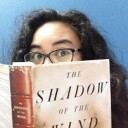
Lianne
Written on Jun 29, 2014
What’s really interesting about Laurie Lee’s account is how it provides readers with a glimpse of the region during the Franco era (the book was first published in 1955). There’s not a whole lot of emphasis on the presence of Franco’s regime on daily life, although the consequences of the Civil War can still be felt amongst its population, such as the case of some of the poets Lee comes across who were associated with Federico Garcia Lorca once. There’s a sort of lost romanticism to his account; I can’t imagine anyone doing some of the things he did when he was in Spain during his youth (i.e. horsing around with a thief and a blind man in Algeciras).
Having said that, the book does start off rather dryly; it only started picking up in the second chapter when the author headed over to Seville. Sometimes his narrative gives a sense of place, other times it doesn’t. His observations nonetheless provide an interesting take of daily life in the places that he visits, the poverty that was rampant in the cities, the customs and festivals that the people partake in. The reader also learns a lot about the author along the way–who he is, how he came to Spain years before this volume, his music–that it’s not necessary to read his previous autobiographies to understand this book.
Overall, I liked A Rose for Winter enough. It wasn’t wholly engrossing as I thought it would be, but it was nonetheless informative, especially his Christmas in Granada and the ebbs and flows of daily life in the region. There’s a certain level of melancholy to his experiences in Spain that’s hard not to miss, and as a classic travelogue I’m glad I had the chance to read it.
